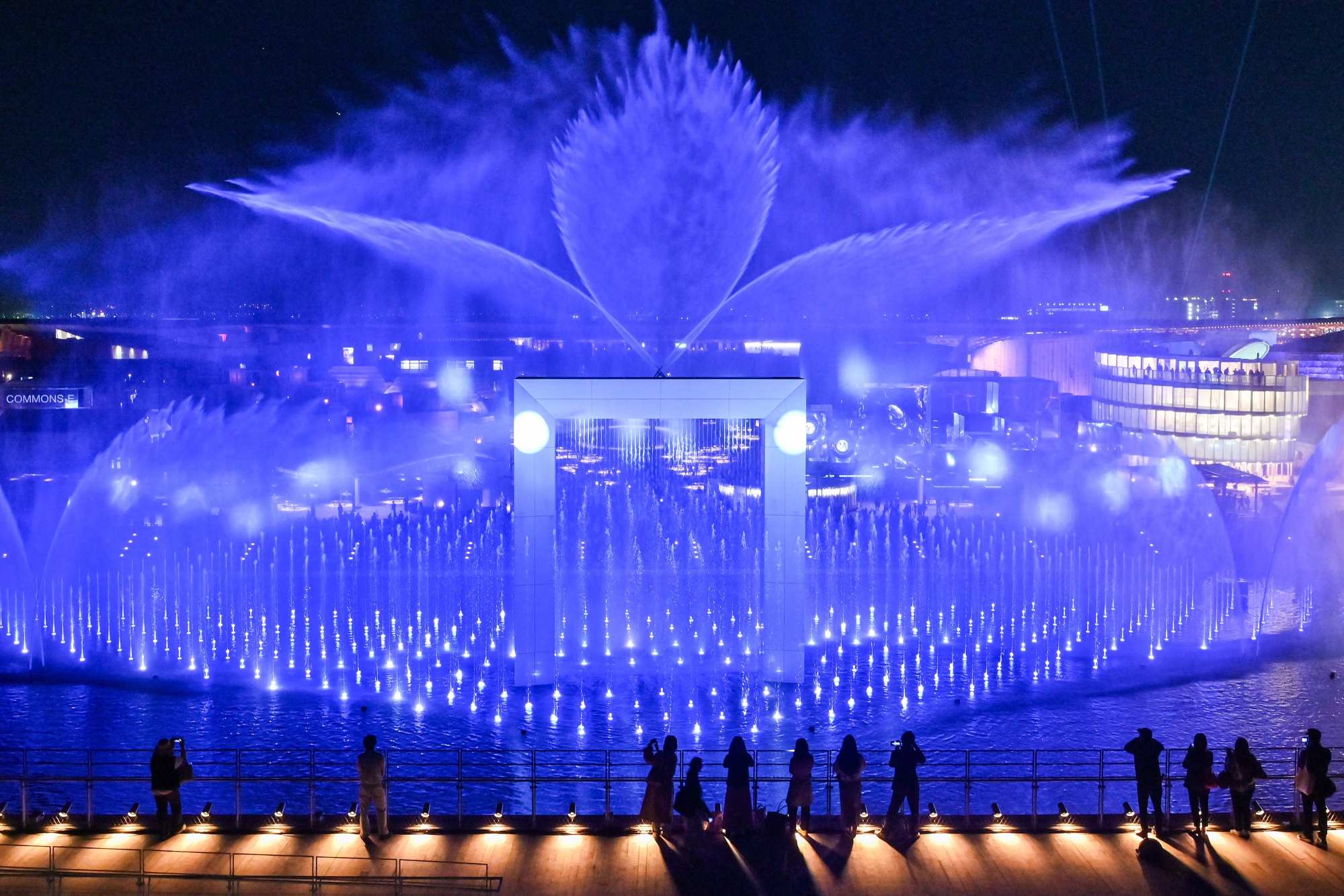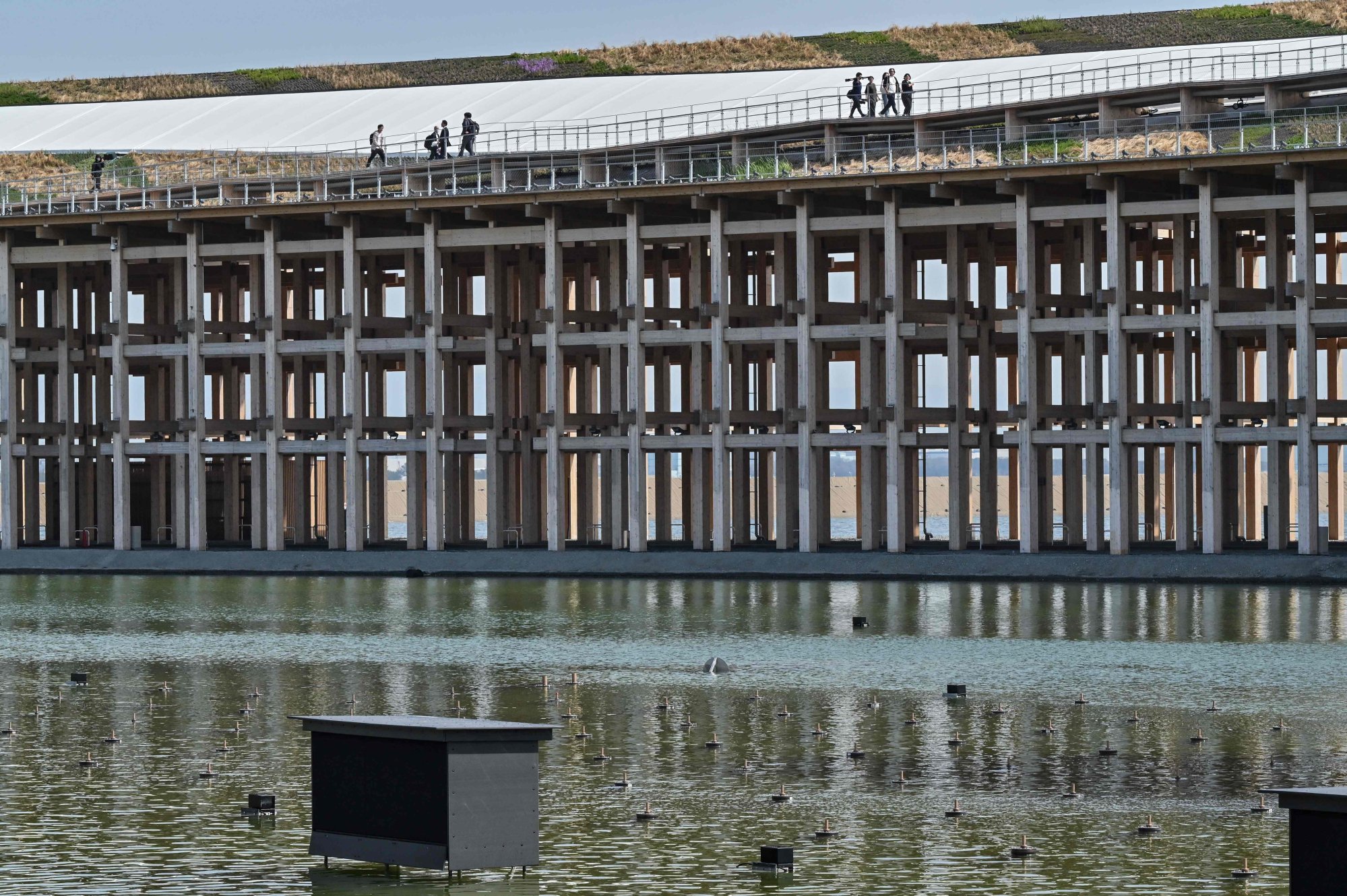Japan’s Osaka Expo water shows suspended as Legionella levels top safety limit
Resumption of the shows will depend on the results of stepped-up sanitisation measures, including pipe cleaning and chemical disinfection

Legionella bacteria 50 times above safe levels have been detected at Japan’s Expo 2025 in Osaka, the latest in a string of problems plaguing the event since its opening in mid-April.
On Monday, the expo organisers announced that the popular daily fountain shows and a shallow pool area had been temporarily cancelled for deep cleaning due to bacterial contamination.
The aquatic show at the Water Plaza has been suspended since June 4, when Legionella bacteria of up to 20 times the legal limit were detected in the water, local media reported.
Another area, the Forest of Tranquility – a shallow 2.3 hectare (5.7 acre) reservoir in the centre of the venue where visitors can soak their feet – has also been closed for cleaning due to contamination.
“I’m disappointed because the only reservation I could get was for the water show,” a visitor told media channel News On Japan on June 4.

Legionella bacteria, found in aquatic environments, can cause respiratory problems if the contaminated aerosolised droplets are inhaled. Possible complications range from a mild flu-like Pontiac fever to the deadly pneumonia-type illness called Legionnaires’ disease.
The contamination was first detected in the Forest of Tranquility on May 28, according to the Mainichi Broadcasting System. Organisers quietly closed down the site two days later.
On May 30, the bacteria was found at the Water Plaza, but the shows were not cancelled as the levels were deemed to be negligible.
“The initial test was a simple check that only confirmed the presence of the bacteria, so there were no directives to suspend operations. We were told to wait for the detailed analysis, which would come later,” Expo Deputy Secretary General Takashina said at a press conference on June 5.
At the same press conference, the acting director of the Facilities Maintenance Bureau of the Expo Association, denied suppressing information. “We only received the notice yesterday and are releasing the information today. There is currently no danger posed by the bacteria,” Koji Yamakita said.
However, initial sanitisation measures proved ineffective as a follow-up test on June 7 revealed the bacteria levels had skyrocketed to 53 times the safety limit.
The shows’ resumption now depends on the results of stepped-up measures the organisers have implemented to improve water quality, including pumping in fresh seawater, pipe cleaning and chemical disinfection.
“Many people are looking forward to the show, and I hope it can resume as soon as possible,” Osaka mayor Hideyuki Yokoyama said at the press conference.

Legionella bacteria have long posed a public health risk in Japan, particularly with the country’s communal bath culture, News On Japan reported.
In 2002, a deadly outbreak at a bathhouse in Miyazaki prefecture killed at least seven and infected more than 200 people. The incident sparked calls for reform and resulted in an overhaul of the Public Bathhouse Law, imposing stricter water testing and cleaning protocols.
The bacterial contamination is the latest in a series of mishaps that have plagued the expo since its opening on April 13. Public frustration has mounted over issues such as long queues, a bomb scare, rogue drones, a malfunctioning subway line and fears of a methane explosion at the venue, which was built on top of a former landfill.
In May, swarms of midges were seen on the wooden walls and pillars of the “Grand Ring”. The bugs, which pose a health hazard as inhaling or ingesting them could trigger asthma and allergic reactions, are believed to have spawned in the Water Plaza and are expected to persist until late autumn.